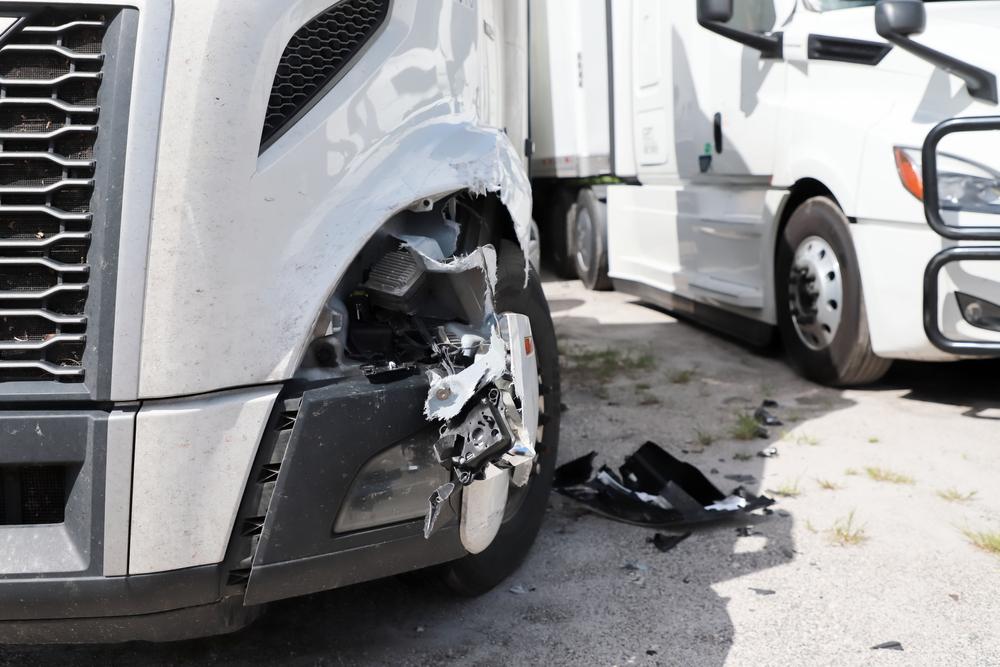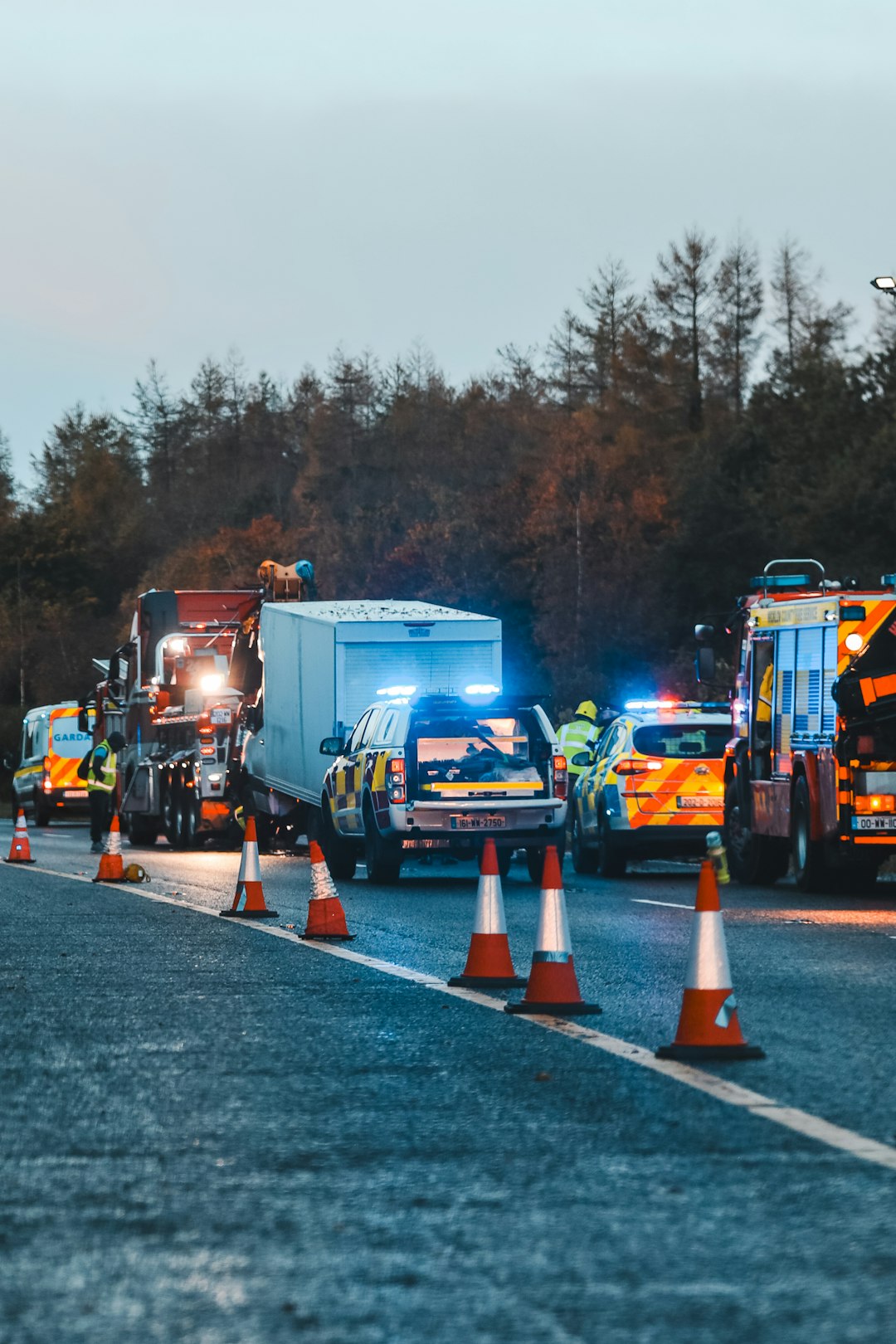Importance of Accident Investigation
Accident investigation is a critical process that plays a pivotal role in enhancing safety standards across various industries. Whether it occurs on the roadways, at a construction site, or within the confines of an industrial plant, understanding the causes and circumstances surrounding an accident is essential for preventing future occurrences. The importance of accident investigation cannot be overstated as it serves multiple vital functions that go beyond mere fact-finding.
Firstly, accident investigation is crucial for uncovering root causes. By delving into the details of what transpired, investigators can identify not just the immediate triggers but also systemic issues that may have contributed to the accident. For instance, an investigation might reveal that a machinery malfunction was due to inadequate maintenance practices or that human error was exacerbated by insufficient training or excessive workloads. Understanding these underlying factors helps organizations implement targeted corrective actions rather than superficial fixes.
Furthermore, thorough investigations contribute significantly to improving safety protocols and regulations. When patterns emerge from different investigations, they often lead to industry-wide changes in safety standards and practices. This proactive approach ensures that lessons learned from one incident are applied broadly to prevent similar accidents elsewhere. It reinforces a culture of continuous improvement and vigilance in maintaining high safety standards.
In addition to safeguarding lives and property, accident investigations also play a crucial role in legal and financial aspects. They provide necessary documentation and evidence should any legal proceedings arise following an accident. Comprehensive reports generated during investigations can protect organizations from unwarranted liabilities by clearly establishing facts and demonstrating due diligence in addressing risks.
Moreover, there is an intrinsic value in fostering trust through transparent accident investigations. Employees are more likely to feel secure working for companies committed to learning from past mistakes rather than sweeping them under the rug. This transparency not only boosts morale but also encourages reporting of near-misses or unsafe conditions without fear of reprisal.
Lastly, effective accident investigations promote a broader societal understanding of risk management and prevention strategies. When findings are shared openly within industries or even with the public, they educate stakeholders about potential hazards and mitigation techniques. This dissemination of knowledge ultimately leads to safer communities as individuals become more aware of their roles in preventing accidents.
In conclusion, accident investigation holds immense importance in building safer work environments and societies at large. Through uncovering root causes, informing policy changes, supporting legal processes, building trust among employees, and educating society about risk management-accident investigations serve as indispensable tools for advancing safety culture globally. Embracing these practices not only mitigates risks but also underscores our collective commitment to protecting life and property against unforeseen events.
Steps in the Accident Investigation Process
Accident investigation is a critical process in ensuring workplace safety and preventing future incidents. The steps involved in accident investigation are systematic and must be conducted with thoroughness and objectivity to uncover the root cause of an accident. This essay will outline the essential steps typically followed in the accident investigation process.
The first step in the accident investigation process is responding to the scene of the incident. Immediate response is crucial, as it ensures that any injured individuals receive prompt medical attention and that further harm or damage is prevented. Securing the scene also helps preserve evidence, which is vital for a comprehensive investigation. Investigators should ensure that only authorized personnel access the area to prevent contamination of evidence.
Once the scene is secure, gathering information becomes the next focal point. This involves collecting physical evidence, such as machinery parts or broken equipment, and documenting conditions at the site through photographs or sketches. Interviewing witnesses and those involved in the incident provides valuable firsthand accounts of what transpired before, during, and after the event.
After gathering information, analyzing data comes into play. This step requires investigators to piece together all collected evidence to determine how and why the accident occurred. Identifying contributing factors-be they human error, equipment failure, or environmental conditions-is key in this phase. Often, this involves reviewing safety protocols or maintenance records to understand if procedures were followed correctly.
Following analysis, identifying root causes is essential for developing effective corrective actions. Rather than focusing solely on immediate causes like operator error, investigators should delve deeper into organizational practices or systemic issues that may have contributed to unsafe conditions.
Finally, implementing corrective measures concludes the process by targeting identified root causes to prevent recurrence of similar accidents. This may involve revising safety policies, enhancing training programs for employees, upgrading equipment, or improving communication systems within an organization.
In summary, each step within an accident investigation-from initial response to implementing corrective measures-plays a pivotal role in understanding accidents thoroughly and preventing future occurrences. By adhering strictly to these steps with diligence and impartiality, organizations can significantly enhance workplace safety while fostering a culture of continuous improvement and accountability.
Gathering and Analyzing Evidence
Accident investigation is a critical process that seeks to understand and rectify the underlying causes of accidents in order to prevent future occurrences. At the heart of this investigative process lies the essential task of gathering and analyzing evidence. This phase not only establishes the foundation for understanding what transpired but also plays a pivotal role in ensuring accountability, enhancing safety protocols, and ultimately saving lives.
The first step in gathering evidence involves meticulously securing the accident scene. This often means cordoning off the area to prevent contamination or disturbance by unauthorized individuals. Preserving the integrity of the site is paramount as it ensures that investigators can collect accurate data about physical conditions at the time of the incident. Photographs, videos, and sketches are typically employed to capture an unaltered representation of the scene. These visual records provide vital context and assist in formulating initial hypotheses about how events unfolded.
Physical evidence encompasses a wide range of elements including debris, equipment malfunctions, skid marks, or any other tangible materials pertinent to the accident. For example, in a vehicular collision, investigators might analyze tire treads or vehicle parts left behind. In industrial settings, machinery parts or safety equipment might be scrutinized for defects or misuse. Each piece of physical evidence offers clues and must be carefully documented, collected, and preserved for further examination.
In addition to physical evidence, witness statements play a crucial role in reconstructing events leading up to an accident. Interviewing witnesses allows investigators to gather firsthand accounts which may reveal insights not immediately evident from physical evidence alone. However, it is important to approach these testimonies with caution; human memory can be fallible and influenced by various factors such as stress or bias.
Once all possible evidence has been gathered from both physical sources and testimonial accounts, analysis begins. This stage demands both technical expertise and critical thinking as investigators seek correlations between different pieces of information while ruling out inconsistencies or anomalies that do not align with established facts.
Advanced technologies have revolutionized how evidence is analyzed today. Computer simulations can recreate accident scenarios based on collected data points providing visualizations that clarify complex dynamics involved during incidents like aircraft crashes or structural failures.
The outcome of thorough analysis yields comprehensive reports detailing causative factors contributing towards accidents - whether they stemmed from human error mechanical failure environmental conditions procedural inadequacies etcetera; thereby enabling organizations regulatory bodies policymakers implement necessary changes improve overall safety standards procedures training programs thus reducing likelihood similar future incidents occurring again
In conclusion gathering analyzing evidence during accident investigations constitutes cornerstone achieving justice closure affected parties most importantly fostering culture continuous improvement vigilance within communities industries alike By meticulously piecing together puzzle surrounding each incident we gain invaluable knowledge empowering us create safer environments protect lives employees citizens world over
Identifying Root Causes of Accidents
Accidents are often abrupt, unexpected events that can lead to significant consequences, both in terms of human life and financial costs. Understanding the root causes of these accidents is crucial for developing effective prevention strategies and ensuring safety across various sectors such as transportation, manufacturing, and construction. Accident investigation serves as a critical tool in this endeavor, providing insights into not just what happened, but why it happened.
At the heart of accident investigation lies the task of identifying root causes. This process goes beyond merely addressing the immediate or apparent reasons an accident occurred; it seeks to uncover the underlying issues that may have contributed to or even precipitated the event. Such an approach is essential because addressing only superficial factors often leads to incomplete solutions, leaving room for similar incidents to occur in the future.
Identifying root causes typically involves a systematic method of inquiry and analysis. Investigators gather data through interviews with witnesses, examination of physical evidence, review of documentation such as maintenance logs or training records, and sometimes even simulations or reconstructions of the incident. A thorough analysis might reveal a range of contributing elements-human error, equipment failure, inadequate training, poor communication systems, or flawed organizational processes.
Human error is frequently cited in accident investigations; however, it's crucial to delve deeper than individual mistakes. Often these errors are symptomatic of broader systemic issues-such as insufficient training programs or relentless work schedules leading to fatigue-that place individuals in positions where errors become more likely.
Similarly, equipment failure might initially seem like a straightforward technical issue but can also point towards deeper problems like neglect in routine maintenance practices or design flaws that had gone unnoticed due to lackluster oversight.
Organizational culture plays a significant role too. A workplace environment that does not prioritize safety over productivity can inadvertently encourage risky behaviors among employees. Therefore, understanding how organizational policies and cultural attitudes contribute to accidents is key to crafting effective preventive measures.
In conclusion, identifying root causes in accident investigations requires looking beyond immediate triggers to understand complex interrelationships between various factors involved. By focusing on these deeper issues rather than quick fixes for apparent symptoms alone, organizations can develop comprehensive strategies aimed at preventing future incidents and fostering safer environments for everyone involved. Ultimately, this meticulous approach not only enhances safety but also promotes a culture where continuous improvement becomes integral-a vital step towards mitigating risks inherent in any operational process.
Developing Recommendations for Prevention
Accident investigation plays a crucial role in enhancing safety and preventing future mishaps. It is a field that demands meticulous attention to detail, objectivity, and a keen understanding of human behavior and engineering principles. The ultimate goal of any accident investigation is not just to understand what went wrong but to develop robust recommendations for prevention.
Developing these recommendations requires a comprehensive analysis of the incident, which involves identifying root causes rather than merely superficial factors. An effective approach often starts with gathering all available data related to the accident, including eyewitness accounts, physical evidence at the scene, and technical data from equipment involved. Investigators must then reconstruct the sequence of events leading up to the accident to identify potential lapses in protocol or unforeseen hazards.
Once these contributing factors are understood, it becomes crucial to address them through well-thought-out recommendations. This process should involve input from various stakeholders, including engineers, safety experts, and frontline workers who can provide practical insights into how proposed changes might be implemented. Recommendations might include redesigning equipment for greater safety, improving training programs for personnel, or revising operational procedures to eliminate identified risks.
Moreover, effective recommendations should be actionable and realistic. Merely identifying what needs change is insufficient if those tasked with implementing changes find them impractical or too costly without clear benefits. Therefore, it's essential for investigators to balance ideal solutions with feasible actions that fit within organizational constraints while still significantly reducing risk.
A crucial aspect of developing prevention strategies is also ensuring that lessons learned are communicated effectively across the organization-and even beyond it-so similar accidents can be avoided elsewhere. This might involve creating detailed reports accessible to all levels of an organization or conducting workshops where findings are shared and discussed openly.
In addition to immediate corrective actions, long-term strategies should also be considered. These could include fostering a culture of safety where continuous improvement is encouraged and employees feel empowered to report near-misses without fear of reprisal. Encouraging transparency in reporting can often reveal patterns that signal underlying issues before they lead to serious accidents.
Ultimately, developing recommendations for prevention in accident investigations hinges on an unyielding commitment to learning from mistakes and proactively instituting changes that safeguard against future incidents. By transforming insights from past accidents into proactive measures for safety enhancement, organizations can move towards a safer environment-not only protecting their people but also ensuring operational continuity in an ever-evolving landscape.
Reporting and Documenting Findings
Accident investigation is a critical process in ensuring the safety and well-being of individuals in various environments, from workplaces to public spaces. At the heart of this investigative procedure lies the essential task of reporting and documenting findings. This step not only encapsulates the essence of what transpired but also serves as a foundation for future preventive measures.
The primary purpose of reporting and documenting findings in accident investigations is to create an accurate, comprehensive record that outlines exactly what happened, how it happened, and why it happened. This documentation typically includes a detailed narrative of events leading up to the incident, witness statements, photographic evidence if available, and any physical evidence collected from the scene. Such thorough documentation helps establish a timeline and provides clarity on factors contributing to the accident.
Beyond just recording facts, effective documentation involves analyzing these facts to identify root causes. This analytical component is crucial because it delves deeper than surface-level observations to uncover underlying issues that may have contributed to the accident. It allows investigators to pinpoint whether human error, equipment failure, environmental conditions, or procedural shortcomings played a role.
Once findings are documented comprehensively, they must be reported to relevant stakeholders such as management teams, regulatory bodies, or other authorities responsible for overseeing safety protocols. A well-structured report communicates all necessary details clearly and concisely while highlighting key insights drawn from the investigation. The goal here is not merely dissemination but rather fostering an understanding that leads to informed decision-making.
Reporting and documenting findings also play a pivotal role in legal contexts where accountability needs establishing or when insurance claims are involved. Clear records ensure transparency and can protect organizations from potential liabilities by demonstrating due diligence was exercised during the inquiry.
Crucially, this process contributes significantly towards improving safety standards. By learning from past incidents through meticulously documented cases, organizations can implement corrective actions aimed at preventing recurrence. These might include revising safety protocols, enhancing training programs for employees, upgrading equipment maintenance schedules or even redesigning workspaces for improved ergonomics.
In conclusion, reporting and documenting findings within accident investigations serve far-reaching purposes beyond immediate fact-finding missions; they lay groundwork for creating safer environments by translating lessons learned into tangible improvements while simultaneously fulfilling necessary legal obligations-thus safeguarding both human life and organizational integrity alike.
Implementing Changes and Monitoring Results
Implementing Changes and Monitoring Results in Accident Investigation
In the realm of occupational safety, accident investigation plays a pivotal role. It not only helps uncover the root causes behind unfortunate incidents but also lays the groundwork for preventing future occurrences. However, the true efficacy of any accident investigation lies in the subsequent implementation of changes and diligent monitoring of results. This process is akin to closing the loop on a cycle that begins with an incident and ends with enhanced safety protocols.
The first step in implementing changes after an accident investigation is to ensure that recommendations are practical, feasible, and tailored to address identified risks. These recommendations should emerge from a thorough analysis of contributing factors, including human error, mechanical failures, or procedural lapses. Once these have been clearly defined, developing a coherent action plan becomes paramount. This plan should outline specific actions required to mitigate risks, assign responsibilities to relevant personnel or departments, and establish timelines for completion.
Engagement and communication are crucial during this phase. Employees at all levels must understand not only what changes are being implemented but also why these changes are necessary. Training sessions can be invaluable here, providing an opportunity to refresh employees' knowledge about safety standards or introduce them to new procedures or equipment. By fostering a culture where safety is prioritized and understood by everyone, organizations can better ensure compliance and cooperation.
Once changes have been implemented, monitoring their effectiveness is critical. This involves setting up systems to track key performance indicators (KPIs) related to safety outcomes-such as reduced incident rates or improvements in hazard reporting-and conducting regular audits or inspections. Continuous feedback loops allow organizations to assess whether new measures are working as intended or if further adjustments are needed.
Monitoring should not be seen as merely a tick-box exercise but rather as an ongoing commitment to improvement. It may reveal unforeseen issues with newly introduced processes that need addressing or highlight areas where further training might be beneficial. This iterative approach ensures that safety protocols evolve over time in response to real-world conditions rather than remaining static.
Moreover, transparent communication about monitoring results helps build trust within an organization by demonstrating accountability and commitment to employee welfare. Sharing successes can motivate staff by showing tangible benefits from their efforts while openly discussing challenges fosters an environment where constructive feedback is valued.
In conclusion, implementing changes and monitoring results following an accident investigation form essential components of effective risk management strategies within any organization focused on workplace safety. By ensuring that recommendations translate into actionable plans supported by robust monitoring frameworks-and maintaining open lines of communication throughout-companies can significantly reduce the likelihood of accidents recurring while simultaneously enhancing overall operational resilience.





